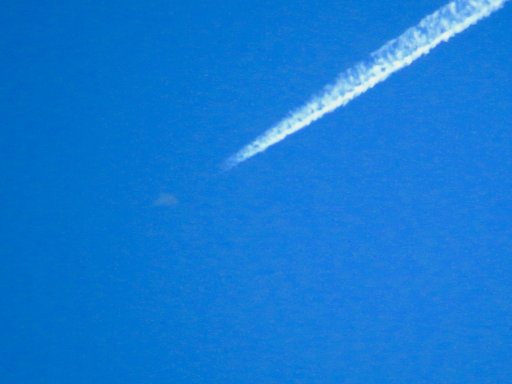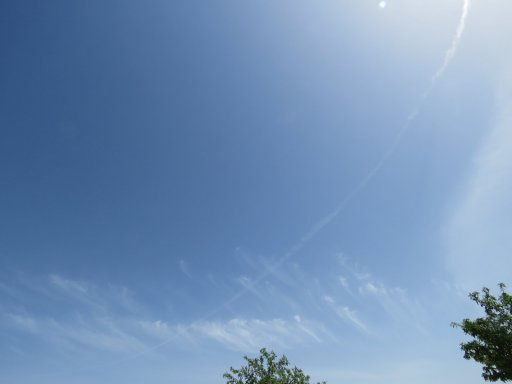The reason for the low contrails appears to be some unusually cold upper air above the UK at the moment. At 300mb (roughly 30,000ft) it is close to -55°C across southern England.

Just looking at this in a bit more detail. The Relative Humidity map at 300mb for the time in question would normally suggest that persistent contrails would be rather unlikely, with RH on the low side (my location marked with the red dot).

However, here is the sounding for Herstmonceux, on the south coast of England about 60 miles away to the southeast, for 1am BST that morning (00Z UTC).


There is a narrow band with RH around 60-70% (actually maybe rather higher, given the dry bias of sounding instruments), at an altitude of 7,000-7,750 metres. That equates to about 23,000ft to 25,500ft. Above 300mb (8,900 metres, or 29,200ft), the RH rapidly drops to zero, which explains why higher-altitude planes were leaving no trails at all.
12 hours later, at 1200Z, the band of higher RH has moved upwards slightly, to about 7,700 to 8,150 metres (25,000 to 26,800ft) although the air is slightly drier overall.

The actual altitude I observed contrails (at about 0700Z) was more like 25,000 to 27,500ft, which is reasonably good agreement.
Incidentally, the very cold air over the UK at the moment means that the tropopause is also very low, and most cruising aircraft will be flying in the stratosphere. This is the skew-T chart for Herstmonceux last night. I have arrowed the tropopause, which is just below the 300mb level, at around 29,000 feet:



 F-OJTN Airbus A340-300
F-OJTN Airbus A340-300











